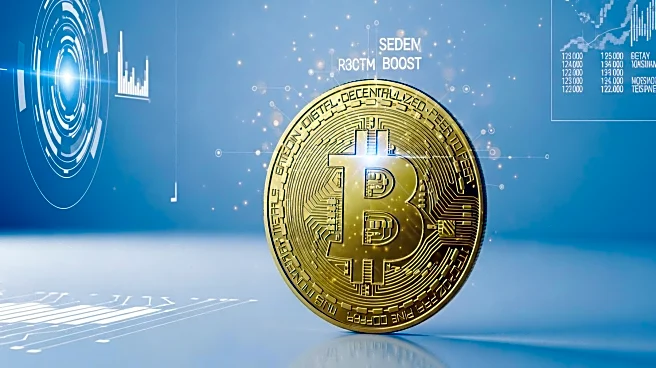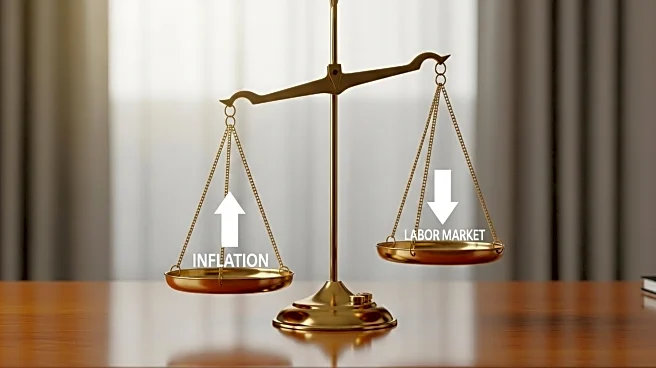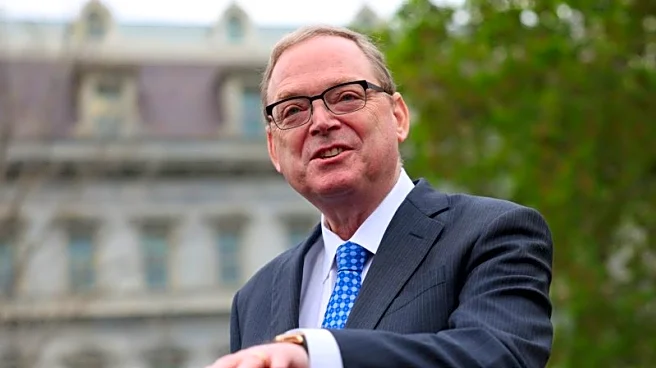What's Happening?
The Federal Reserve and U.S. Treasury are under increasing pressure to address a deteriorating labor market, as recent employment data has heightened expectations for aggressive monetary easing. The August nonfarm payrolls report revealed only 22,000 new jobs, significantly below the forecast of 75,000, with the unemployment rate rising to 4.3% from 4.2% in July. This slowdown in job creation has led to market speculation about a potential rate cut by the Federal Reserve. The CME FedWatch tool indicates a near certainty of a 25-basis-point rate cut at the Fed's September meeting, with a 12% probability of a 50-basis-point cut. U.S. Treasury Secretary Scott Bessent has suggested a 100-basis-point cut this year. Despite these expectations, financial markets have shown modest gains, with major indices like the Nasdaq Composite experiencing limited support amid a selloff in AI-related stocks.
Why It's Important?
The potential rate cut by the Federal Reserve is significant as it reflects the central bank's response to a cooling labor market and rising unemployment. Such monetary easing could impact various sectors, including financial markets and cryptocurrencies. While Bitcoin briefly surged in response to rate cut hopes, it quickly retreated, indicating bearish sentiment. Ethereum also faced challenges, with significant outflows from related ETFs. The broader market's muted reaction suggests concerns over macroeconomic resilience and fiscal policies. Analysts are divided on the implications, with some fearing a recession while others focus on inflation management. The Fed's actions will be crucial in balancing economic stability and inflation control.
What's Next?
Investors are now turning their attention to upcoming inflation data, including the Producer Price Index (PPI) and Consumer Price Index (CPI), which are critical for assessing the Fed's ability to balance its dual mandate of maximum employment and stable inflation. The central bank's next move will be closely scrutinized, as it seeks to prevent an economic downturn without exacerbating inflationary pressures. The market's response to these developments will be pivotal in shaping future monetary policy decisions.
Beyond the Headlines
The situation highlights the delicate balance the Federal Reserve must maintain between stimulating economic growth and controlling inflation. The labor market's weakness could signal broader economic challenges, potentially influencing fiscal policy and government spending. The Fed's decisions may also affect global economic trends, given the interconnected nature of financial markets.












